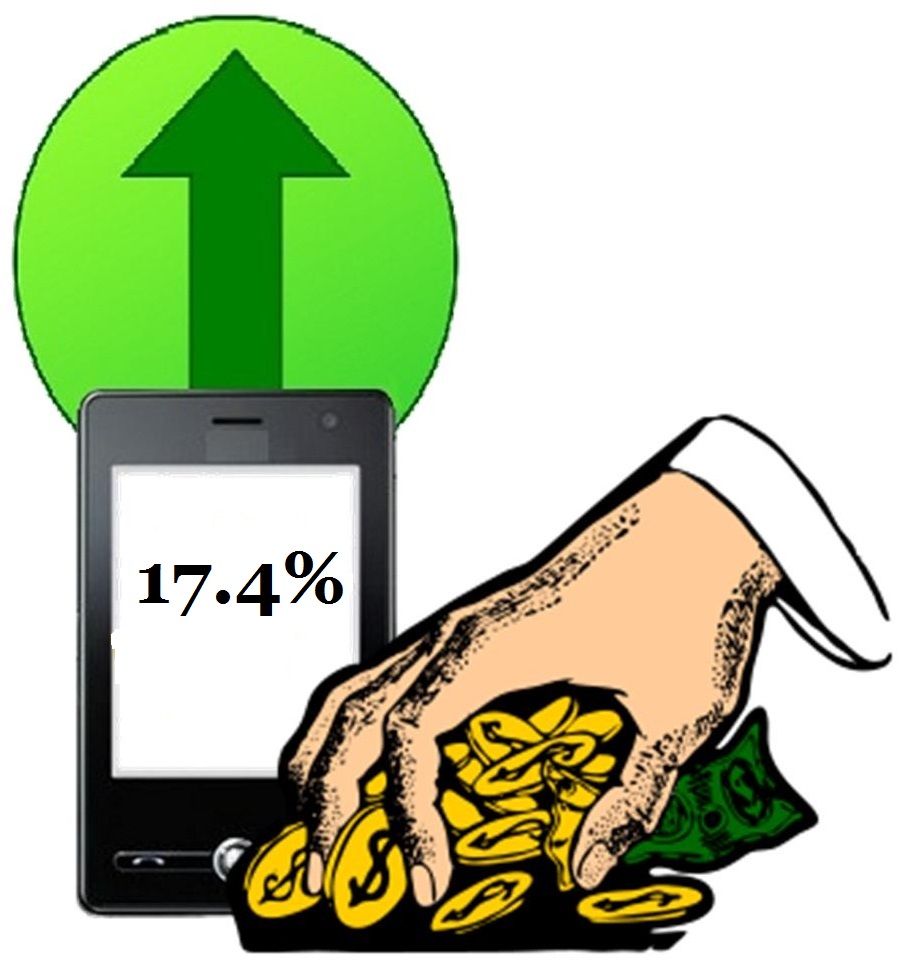According to recent statistics, mcommerce currently makes up 30 percent of online earnings.
The introduction and rapid penetration of smartphones has completely turned the world of online shopping on its head, to the point where mobile commerce is now representing a considerable share of the revenues that are being generated through ecommerce.
In fact, some of the latest data has indicated that mcommerce could represent nearly a third of online shopping revenue.
For example, in 2012, mobile commerce made up 10 percent of the overall revenues generated online by the websites of fashion retailer, Myntra, as well as 5 percent for Snapdeal an online deal provider. In 2013, however, that same channel was generating double the percentage for Myntra, and six times the percentage for Snapdeal, the latter of which was experiencing nearly daily growth in that area.
Travel companies are also benefiting from growing mobile commerce use by consumers.
It has been estimated that 15 percent of online travel company bookings at Yatra.com originated from smartphones. That company is now aiming to try to boost that figure to between 40 and 50 percent of its online revenue share, as rapidly as possible. Justdial, a local search website, has seen a much more considerable success rate, after having seen a growth of its mobile share of revenues by 150 percent.
For a long time the trend was for smartphone and tablet users to browse over their mobile devices and make their purchases in person, not online. Or they would browse over those gadgets and then make an online purchase using a laptop or desktop computer. However, that trend seems to be shifting as a growing number of people start to use their smartphones and tables for a larger number of daily tasks, including shopping and buying.
This trend toward mobile commerce buying has been accelerated by the rising number of retailers and merchants who have been optimizing their websites for smaller screens as well as creating dedicated apps. They have allowed for a greater amount of competition, comparison, and options so that consumers have more choice available to them through this channel.
The contribution of personalization has made a considerable difference in the channel’s popularity.
According to a whitepaper that was recently released by Medio, this year, mobile commerce is contributing 17.4 percent to the total online shopping revenues, and that is only expected to rise.
The report went on to predict that the channel will represent 25 percent of online revenues by 2017.
Medio pointed out that retailers are finding mobile commerce to be appealing in a number of ways, and these are helping to make it more effective so that they can generate more revenues by way of smartphone and tablet shoppers. It stated that the channel gives companies the chance to collect a considerable amount of useful data from consumers. Though the majority have yet to figure out how to use this information to its greatest potential, there remains a significant amount of value that can be pulled from big data.
The mobile commerce whitepaper showed that real-time tools and predictive analytics assist in personalization.
 It showed that the information gleaned through mobile commerce can, in turn, be applied to personalizing the experience offered by the retailer to encourage the consumer to shop for the first time, and to return once more when similar products are needed.
It showed that the information gleaned through mobile commerce can, in turn, be applied to personalizing the experience offered by the retailer to encourage the consumer to shop for the first time, and to return once more when similar products are needed.
In terms of personalization and its importance, the whitepaper stated that “A search for a product might begin on a smartphone, while order fulfillment is finalized on a PC or tablet. Being able to identify the same user across devices is necessary to create a personalized relationship; the foundation of sophisticated and intelligent user segmentation starts with being able to deduce when two users are in fact the same person.”
Mobile commerce does not typically allow for the use of cookies. Therefore, to compensate for that, it is important for companies to use advanced customer segmentation, said the whitepaper. This requires the use of matching algorithms with greater sophistication. This practice uses a form of predictive analytics, which can assist in targeting users more effectively, at the times that they are most likely to be interested and receptive to product information, discount opportunities, and calls to action.


 It showed that the information gleaned through mobile commerce can, in turn, be applied to personalizing the experience offered by the retailer to encourage the consumer to shop for the first time, and to return once more when similar products are needed.
It showed that the information gleaned through mobile commerce can, in turn, be applied to personalizing the experience offered by the retailer to encourage the consumer to shop for the first time, and to return once more when similar products are needed.